According to the State of Michigan, the total number of COVID cases in Michigan rose to 51,142 on May 17, an increase of 638 cases from the previous day. This total was equivalent to 512 cases per 100,000 people (Chart 4). The five-day rolling average for the total number of COVID cases (Chart 1) reflects a smoother curve and adjusts for fluctuations in testing and/or the quality of reporting or failure to report. While the curve is smooth, Chart 1 shows that number of cases in Michigan continues to increase, although the rates of increase over the last week have been higher than the week before.
Chart 2 shows that, based on the five-day rolling averages, the number of new COVID cases in Southeastern Michigan are also only gradually increasing. The number of cumulative COVID cases remained the highest in Detroit, reaching 10,208 on May 15, with Wayne County following at a reported 8,616 cases. On May 15, the five-day rolling average for the number of COVID cases in Oakland County was 7,968, and Macomb County reported 6,258.
The City of Detroit had 1,538 COVID cases per 100,000 people on May 17, a small increase from 1,535 the day before (Chart 3). This is based upon a reported increase of 21 new cases, bringing the total number of COVID cases in Detroit to 10,348. Wayne County reported 810 cases per 100,000 people, and Oakland County had 640 cases per 100,000 people. These per capita rates were based upon 8,717 total cases for Wayne and 8,043 for Oakland. Macomb County reported 726 cases per 100,000 people, which is based upon 6,345 cases.
The daily data highlighted in these posts is from Michigan.gov/coronavirus, where data is updated daily at 3 p.m. Historical data were supplied from covidtracking.com, which republishes COVID data from the State. Additionally, the case totals do not reflect the number of people who have recovered, just those who have been infected.
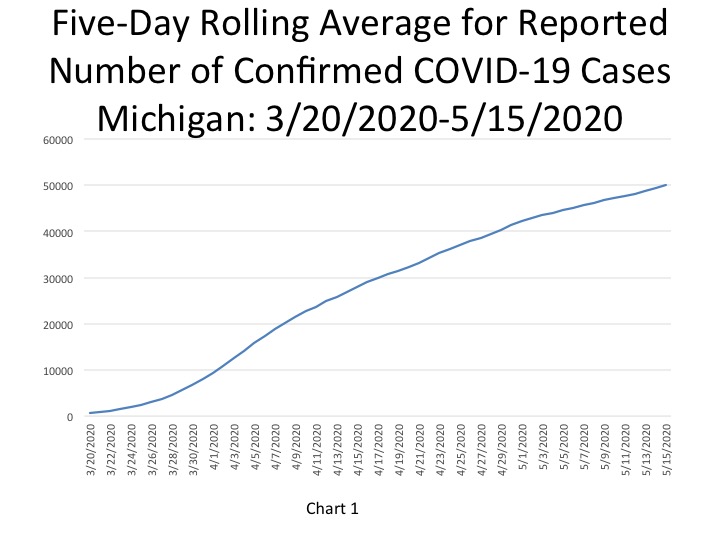
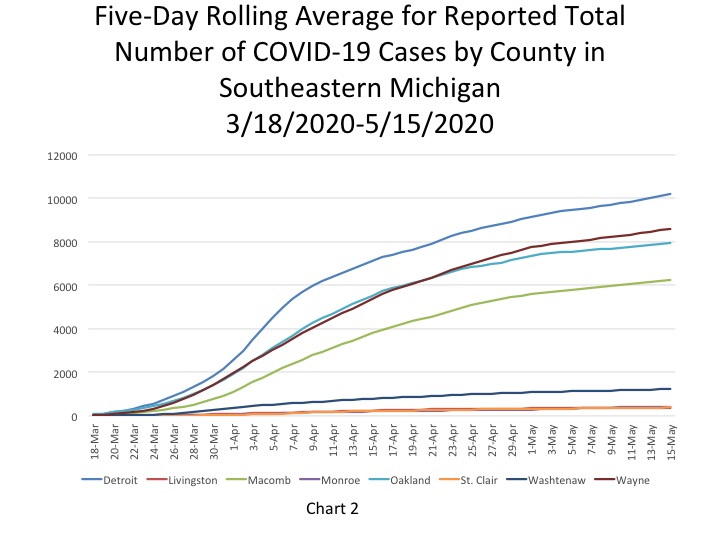
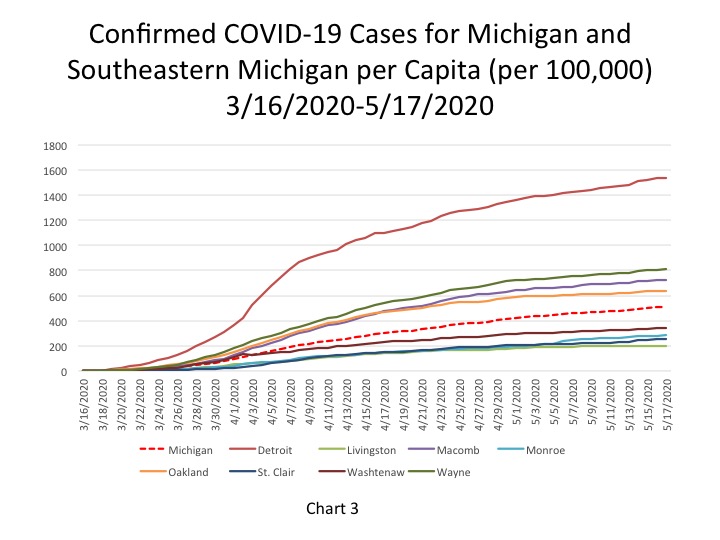
Chart 4 shows that Detroit reported the highest number of daily cases at 90 on May 15, only a small decrease from the day prior. Overall, this chart shows that daily case numbers are declining but in recent days those numbers have been higher than in the week prior.
Chart 5 highlights how the per capita rate for the number of new daily COVID cases per 100,000 people did drop significantly down for Detroit on May 17. On May 17 Detroit reported a per capita rate of 3 new COVID cases per 100,000 people, which was a decrease from the per capita rate of 14 reported the day prior. In total, Detroit reported 21 new COVID cases on May 17. Wayne County’s per capita rate was 3 new COVID cases, which was equivalent to 28 new cases. Oakland County reported a per capita rate of 2 new cases per 100,000 people on May 17, which was equivalent to 20 new cases, and Macomb County reported a rate of 5, which was also equivalent to 41 new cases.
The State’s per capita rate was 5 new cases per 100,000 people, equivalent to 638 new cases. Of these 638 new cases, Southeastern Michigan accounted for 122. This shows that Southeastern Michigan did not account for the majority of new cases in the State on May 17; the region didn’t even account for half of the new cases.
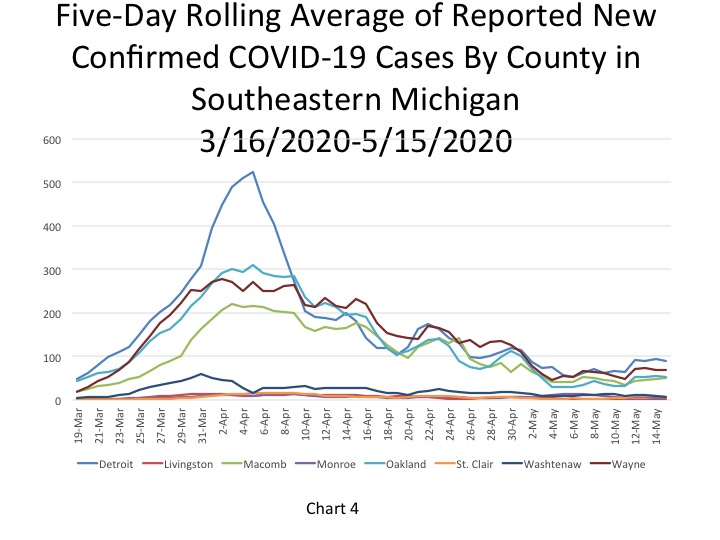
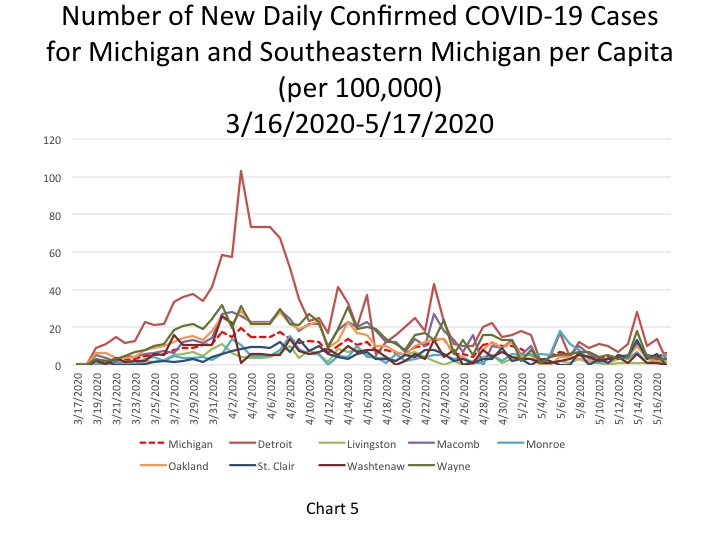
Chart 4 shows that Detroit reported the highest number of daily cases at 90 on May 15, only a small decrease from the day prior. Overall, this chart shows that daily case numbers are declining but in recent days those numbers have been higher than in the week prior.
Chart 5 highlights how the per capita rate for the number of new daily COVID cases per 100,000 people did drop significantly down for Detroit on May 17. On May 17 Detroit reported a per capita rate of 3 new COVID cases per 100,000 people, which was a decrease from the per capita rate of 14 reported the day prior. In total, Detroit reported 21 new COVID cases on May 17. Wayne County’s per capita rate was 3 new COVID cases, which was equivalent to 28 new cases. Oakland County reported a per capita rate of 2 new cases per 100,000 people on May 17, which was equivalent to 20 new cases, and Macomb County reported a rate of 5, which was also equivalent to 41 new cases.
The State’s per capita rate was 5 new cases per 100,000 people, equivalent to 638 new cases. Of these 638 new cases, Southeastern Michigan accounted for 122. This shows that Southeastern Michigan did not account for the majority of new cases in the State on May 17; the region didn’t even account for half of the new cases.
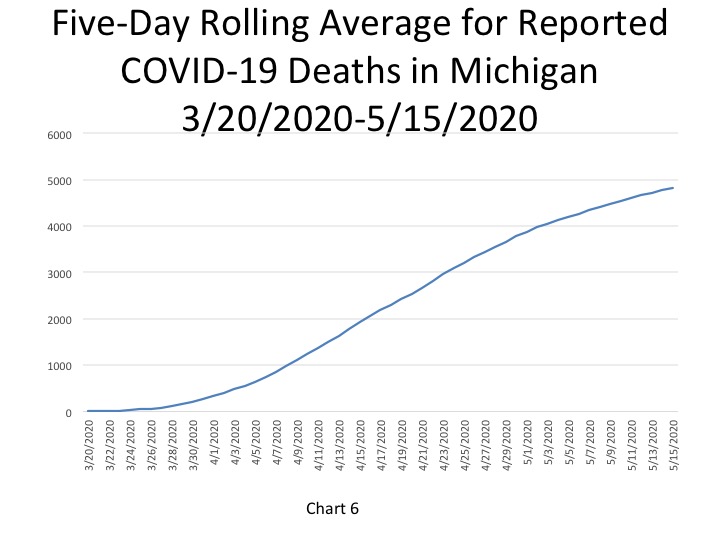
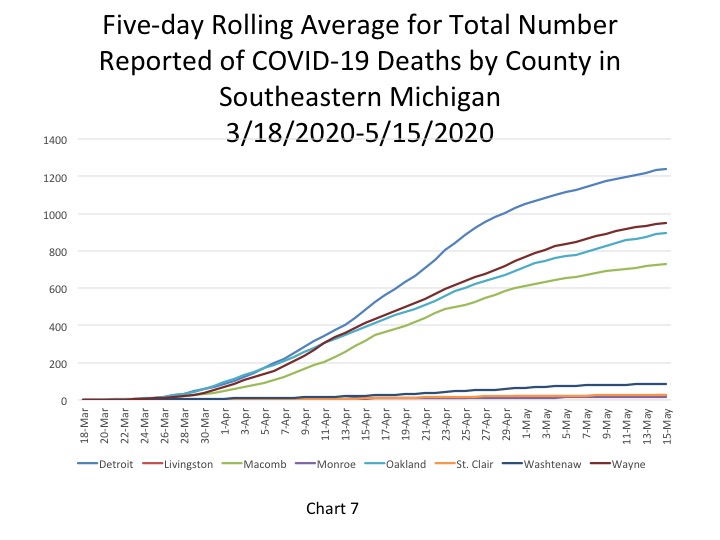
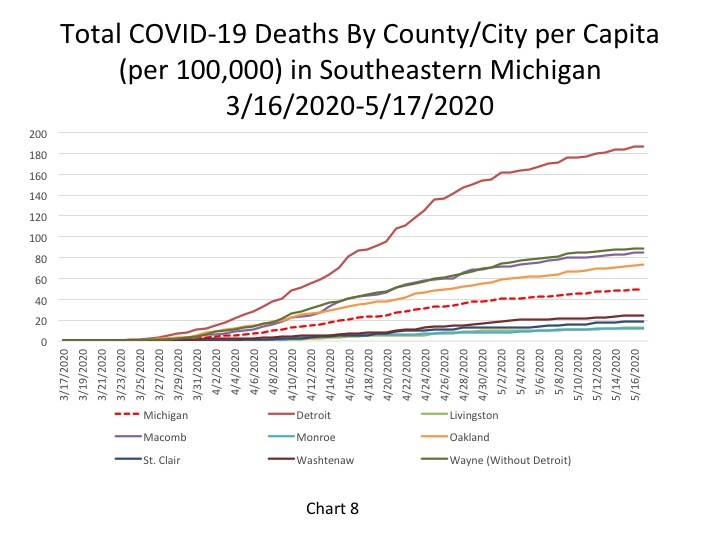
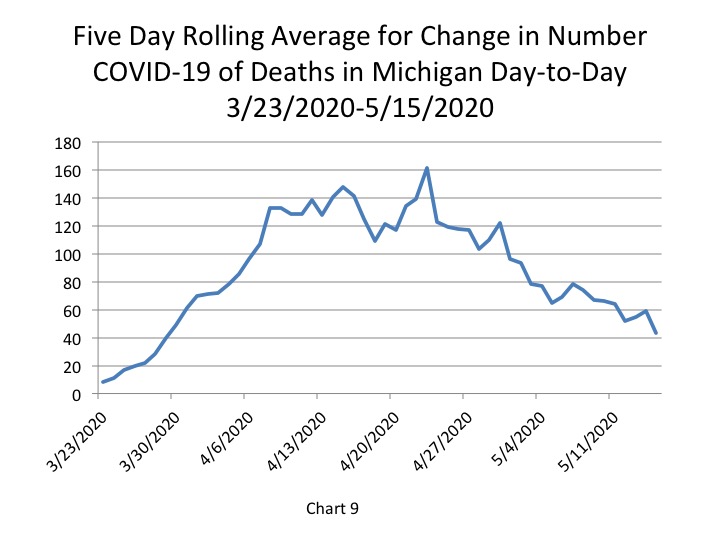
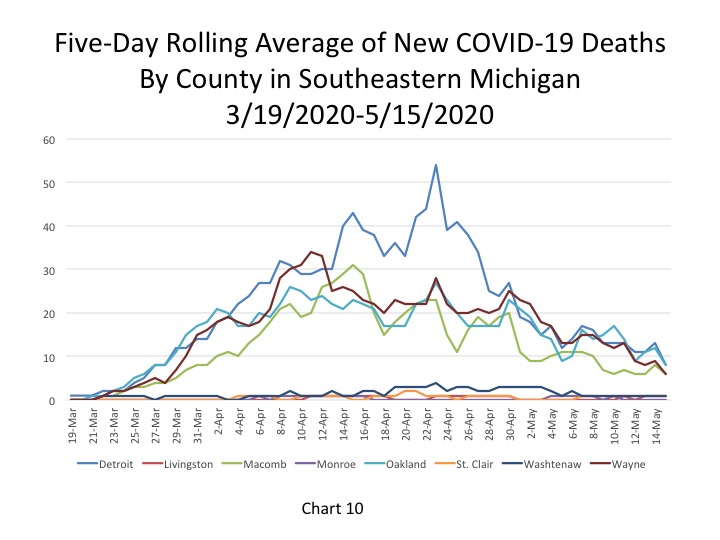
The fatality rates throughout Southeastern Michigan leveled off in recent days, with Detroit still reporting the highest rate at 12.2 percent on May 17. The State reported a 9.6 percent fatality rate.
One reason we may be seeing such high fatality rates in Michigan is due to the low testing rates. When only having-presumably-a lower of number confirmed COVID cases than is actually likely due to the limited availability of tests, the fatality rate appears higher because the base comparison is smaller than it might be.
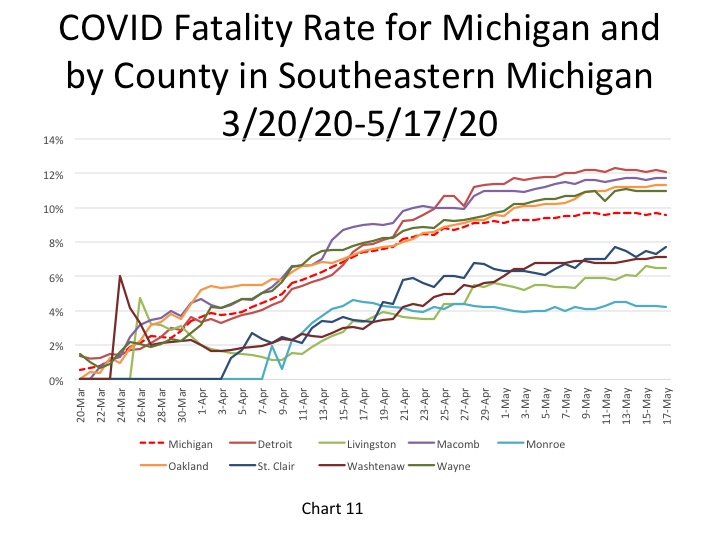
May 17 was the first time since March 24 that Detroit reported zero COVID deaths. However, since there is a delay in reporting some deaths may not have been reported, according to the State. Overall though, the data is showing that daily death numbers continue to decline in the State and we can only hope this trend continues.